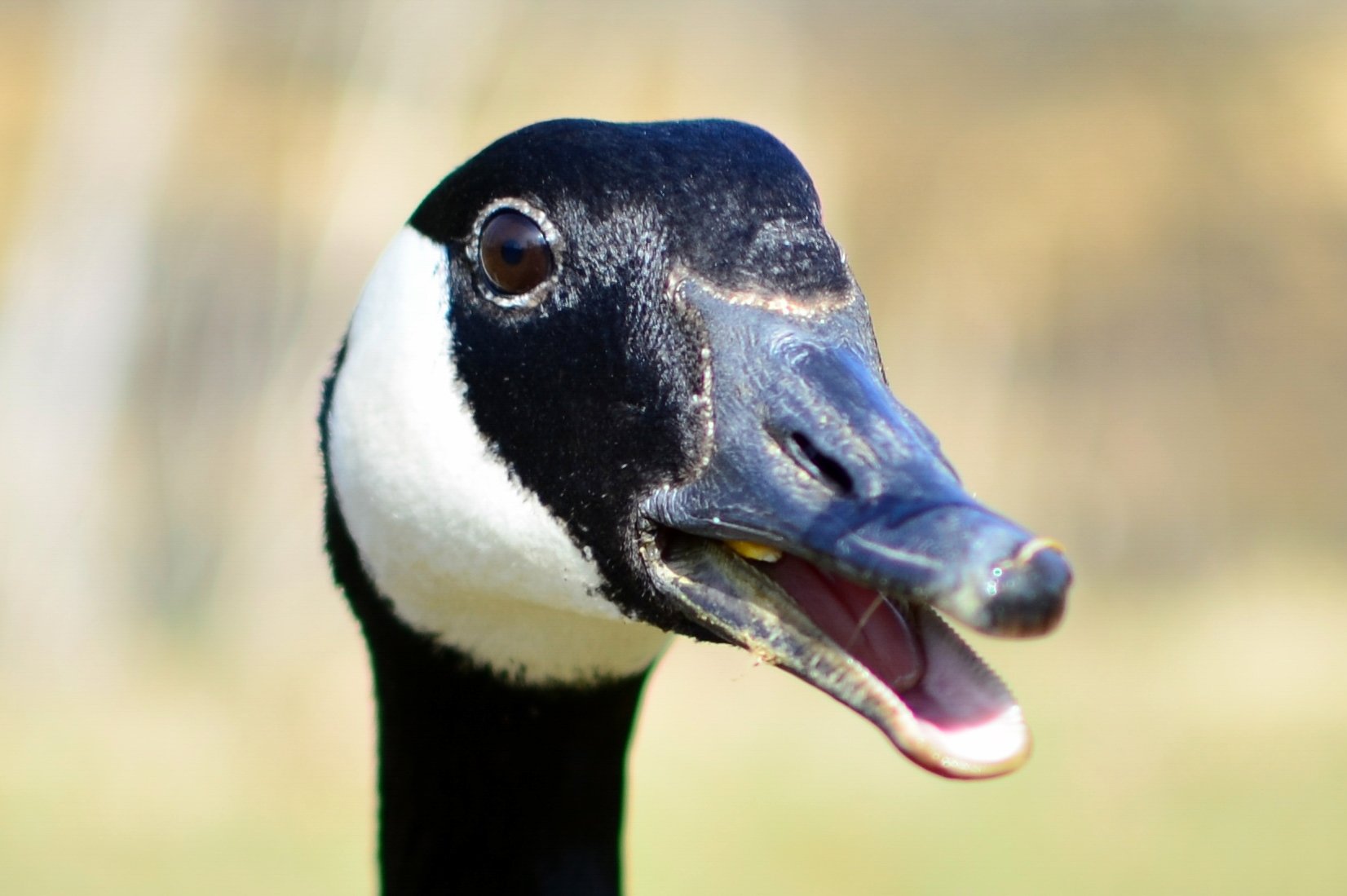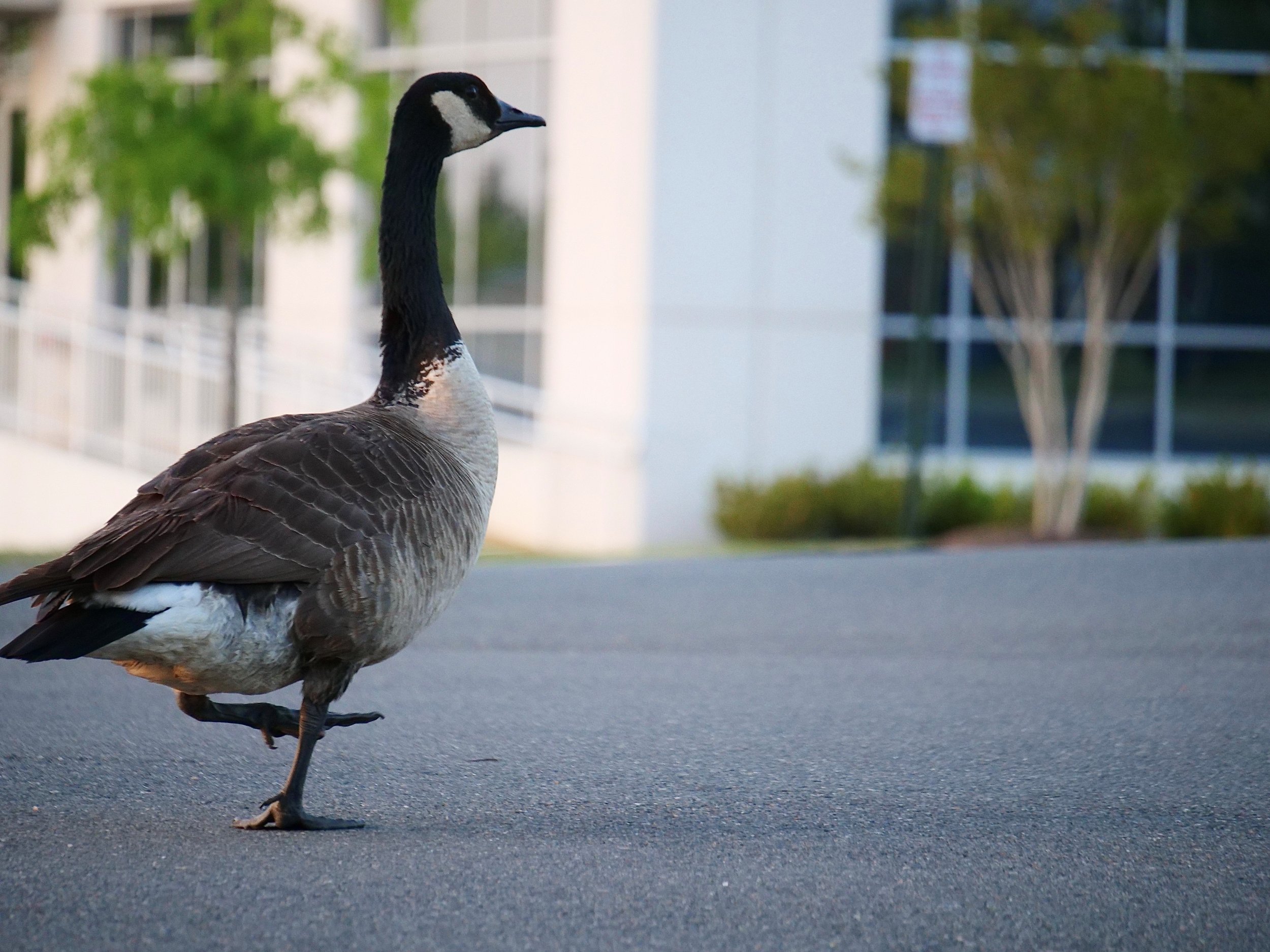Photo: Canada Goose, Deidra Bryant
Deidra Bryant
Ah, the notorious Canada Goose. We see them on golf courses, at parks, on corporate office campuses, near ponds, and of course, casually crossing busy roads in suburban neighborhoods. Although some still migrate, many, sometimes too many, make northern Virginia their year-round home. All our expansive suburban lawns are just too attractive.
The Canada Goose (Branta canadensis) and I have an . . . interesting relationship. Now, the Anatidae family--which includes ducks, geese and swans--is actually my favorite family of birds. They have interesting feather colorations, I find their vocalizations therapeutic, and they’re a lot of fun to watch. I enjoy watching geese fly in V-shaped formations when they migrate, and I enjoy observing their interactions with each other when they’re gliding along the water. However, they’re scarily aggressive.
Canada Goose, Stephen Zarate/Audubon Photography Awards
They’re fearless towards humans, fast on the wing and foot (they’ll chase you), and are relatively large and hefty birds weighing around 7-14 pounds. Because of their size they have powerful flight muscles in their wings which can cause significant damage if they strike with them. The inside of the bill also has layers (lamellae) of hardened keratin that form sharp cutting edges, called “tomia,'' making goose bites very painful. Their loud hissing and angry honking also are intimidating. I always keep my distance because they can be unpredictable. ESPECIALLY in the springtime when I know it’s likely they’ll have goslings nearby.
Canada Goose, Benjamin Schelling/Audubon Photography Awards
I’m sure everyone has had, or knows someone who has had, a negative encounter with this confident waterfowl, whether it’s a goose stalking you, standing in the road as you’re trying to get somewhere fast, trying to steal food from you if you’re eating outdoors, or being a nuisance at airports. The confrontations are so common that there are many videos online and on television of them scaring young children and making grown men back away. However, I don’t want this article only to rant about their aggressive behavior. I want people to understand why they are the way they are, and why we should respect their space.
Nesting for Canada Geese begins around mid-March to late April here in northern Virginia. Females build their nests on the ground in places that provide concealment, such as under shrubs or at the base of mature trees that are located on the edges of wetlands or on small islands in lakes or ponds. Their nest sites are usually always within 100 feet of water, and the nest is a bowl-shaped scrape lined with dry grasses, twigs, moss, lichen, and soft, down feathers. After nest construction, which is mostly done by the female, she will lay one egg every 1-2 days for a total of between 2-8 eggs. Incubation is 28 days, and both males and females will defend the nest and the goslings. The males are the most protective/hostile and will defend the goslings until they learn to fly (10-12 weeks after hatching). When feeding, they’ll forage as a family and choose to do so in open areas so that the adults have a 360° view of potential predators.
Canada Geese with goslings, Marilyn J. Grubb/Audubon Photography Awards
Canada Geese also are very social. Parents will bring their goslings together in groups called “crèches” that are looked after by other mating pairs, like some kind of goose kindergarten. Parents also may form “gang broods” with other pairs and their families. These broods can range from 20 to 100 goslings being shepherded by only a few adults! Goslings may mingle and waddle away from their parents, but communal babysitting is key in areas with a high nest density, so another mating pair will look after them. It’s literally just one big family neighborhood watch, and I find that pretty interesting. So yes, they’re very aggressive towards threats several times their size, but once you understand their behavior in looking after offspring that aren’t even genetically theirs, expending their energy and risking their lives in doing so, it makes sense. They’re just really good parents.
Canada Goose crossing the road, Deidra Bryant
So why did the Canada Goose cross the road? Don’t worry about it. It has goose things to do over there. Be patient and let them saunter safely to their destination . . . or else.





